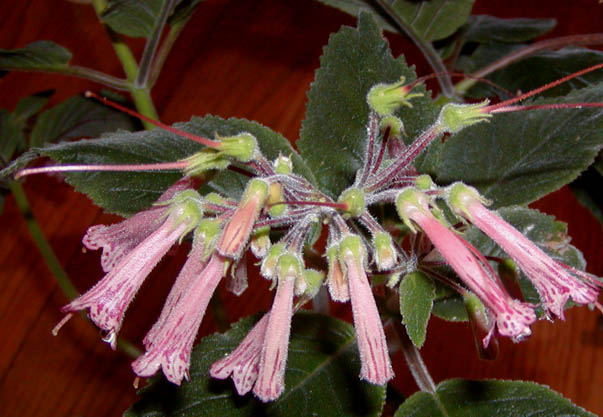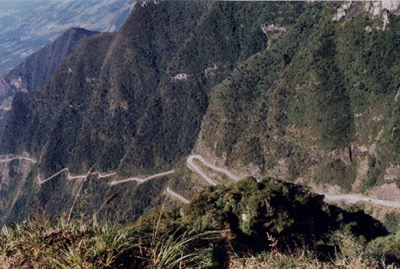Sinningia nivalis
The picture below shows just one of several flower clusters on a very nice plant grown by JoAnna Behl of the Peninsula Gesneriad Society. The streaks typical of its group of species (which includes S. douglasii) are very evident. The flower photo at the right, sharpened to bring out the detail, is from the same plant.


